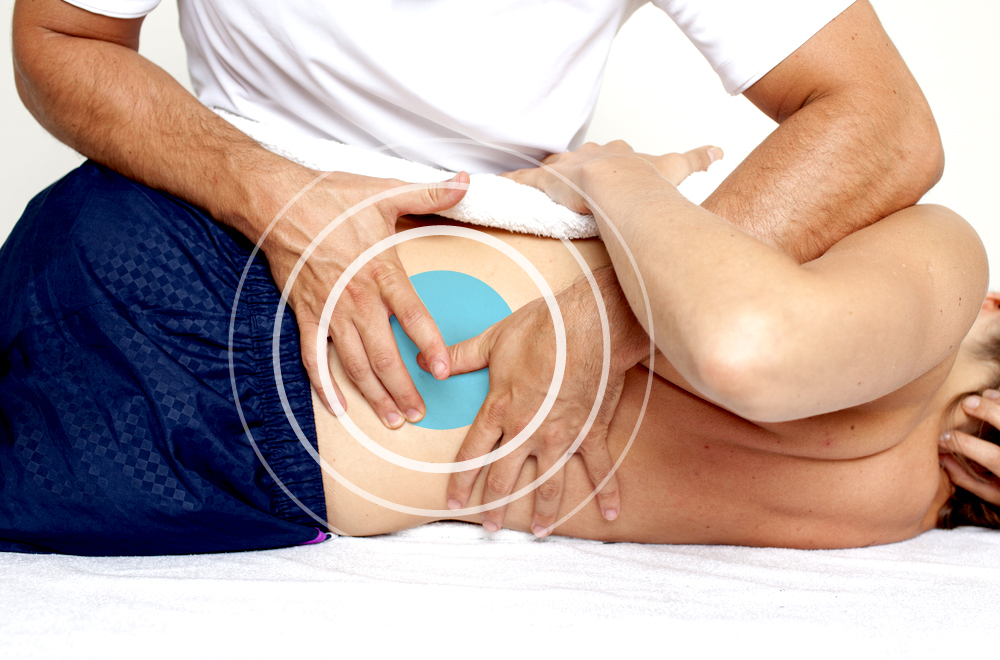- Chiropractic and osteopathic medicine represent another nonsurgical treatment option for patients with back pain. Chiropractors and osteopathic doctors may decrease low back pain by mobilizing joints in the lumbar spine though manipulations (commonly referred to as “adjustments”).
- Chiropractic and osteopathic manipulations can be especially helpful in relieving pain for facet joint injuries, osteoarthritis, and sacroiliac joint dysfunction, as these conditions represent joint dysfunction that responds well to mobilization.
- The overall philosophy for chiropractic medicine is that joint dysfunction in the lower (lumbar) spine can produce lower back pain.
- Chiropractors manipulate the spine to treat “subluxation,” which details the altered position of the vertebra and subsequent functional loss that occurs as a result of the vertebra being out of position in comparison to other vertebrae.
- A chiropractic adjustment typically involves the chiropractor applying high velocity, short lever arm thrusts to the vertebra, with the goal of reducing pressure on the joints and providing pain relief.

Chiropractic and osteopathic medicine represent another nonsurgical treatment option for patients with back pain. Chiropractors and osteopathic doctors may decrease low back pain by mobilizing joints in the lumbar spine though manipulations (commonly referred to as “adjustments”).
Chiropractic and osteopathic manipulations can be especially helpful in relieving pain for facet joint injuries, osteoarthritis, and sacroiliac joint dysfunction, as these conditions represent joint dysfunction that responds well to mobilization.
Chiropractic Treatment of Lower Back Pain
The overall philosophy for chiropractic medicine is that joint dysfunction in the lower (lumbar) spine can produce lower back pain.
Chiropractors manipulate the spine to treat “subluxation,” which details the altered position of the vertebra and subsequent functional loss that occurs as a result of the vertebra being out of position in comparison to other vertebrae.
A chiropractic adjustment typically involves the chiropractor applying high velocity, short lever arm thrusts to the vertebra, with the goal of reducing pressure on the joints and providing pain relief.
Spinal manipulation may be performed via different chiropractic techniques that are most often painless and relieving, including:
- Instrument Adjustments – The chiropractor utilizes a spring-loaded instrument as the patient lies face down during the chiropractic adjustment.
- Lumbar roll – The chiropractor applies a quick thrust to the subluxation as the patient lies sideways.
- Motion palpation – As the patient moves around, the chiropractor uses the hands to examine extravertebral joint and vertebra movements and assess any joint dysfunction.
- Release work – The chiropractor uses the fingertips to apply pressure on and gently separate the vertebrae.
- Toggle drop – The chiropractor uses crossed hands to press down on the spine and apply a quick and precise thrust to improve joint mobility.
Osteopathic Treatment of Lower Back Pain
Unlike chiropractors, osteopathic doctors can be any type of specialist. They may also prescribe medication.
Osteopathic doctors believe that the body is a unified whole and that mobilization of many of its components (especially the musculoskeletal system) fosters natural processes of self-regulation and self-healing.
Osteopathic treatment of lower back pain may include one or more of the following techniques:
- Counterstrain – The osteopathic doctor pinpoints an exact position of maximum lower back pain for the patient, slowly positions the patient to a position that provides maximum comfort and then gradually returns the patient to a more neutral position.
- High velocity low amplitude thrusts (HVLAT) – Very similar to what chiropractors do, the osteopathic doctor applies a high-velocity low amplitude thrust to the joint to reduce any restricted movement.
- Massage – The osteopathic doctor may perform different massages to stimulate the muscles. See Massage Therapy for Lower Back Pain.
- Myofascial Therapy – The osteopathic doctor may employ this soft tissue therapy to release muscular shortness and tightness. For more information, see Myofascial Therapy for the Treatment of Acute and Chronic Pain
- Muscle Energy – The osteopathic doctor applies a counterforce to the muscles while they are being used in a specific position and direction, such as when flexing.
- Soft Tissue Mobilization – The osteopathic doctor utilizes rhythmic stretching, deep pressure or traction techniques to engage the muscle area around the spine.